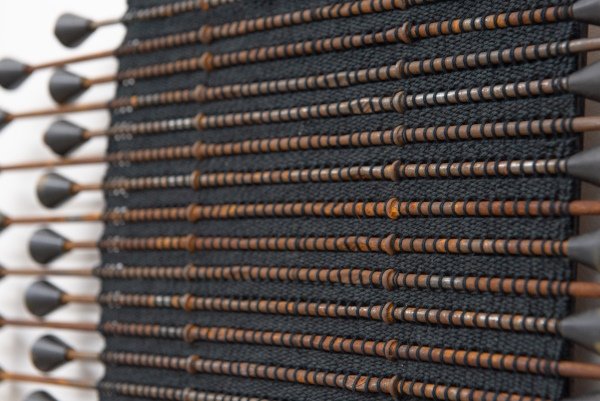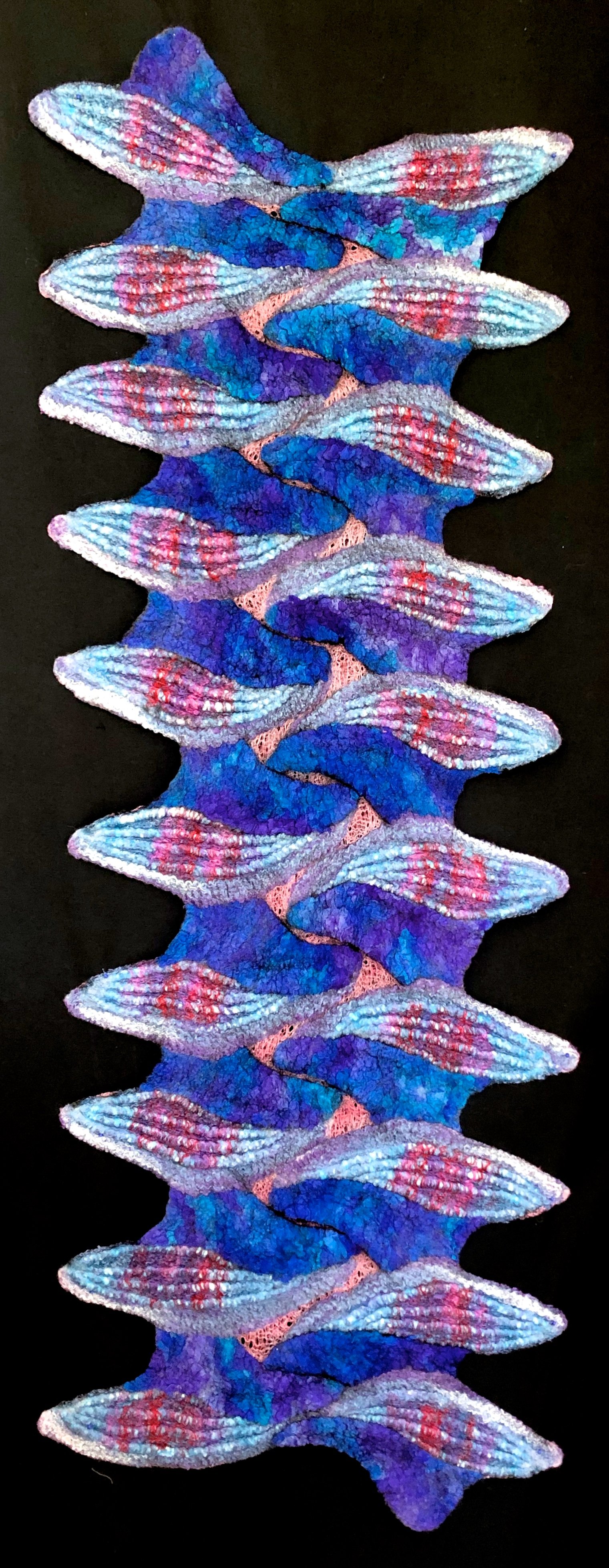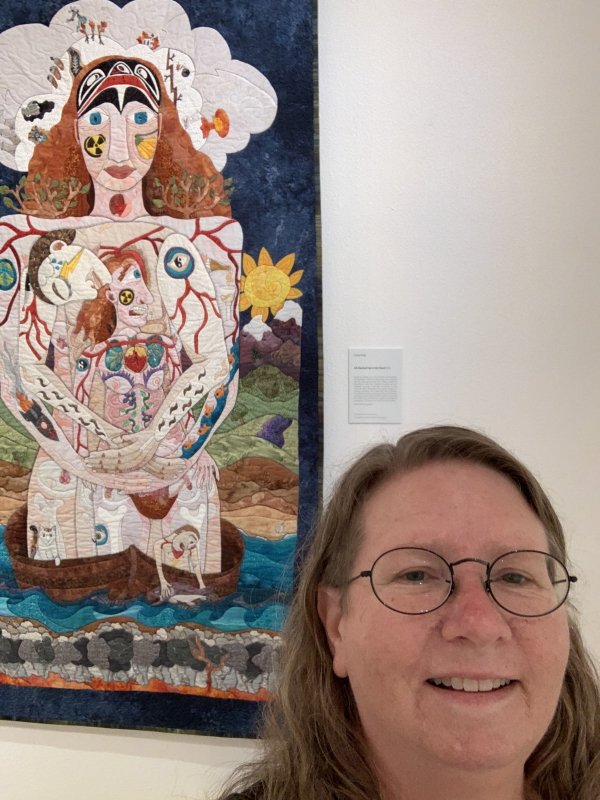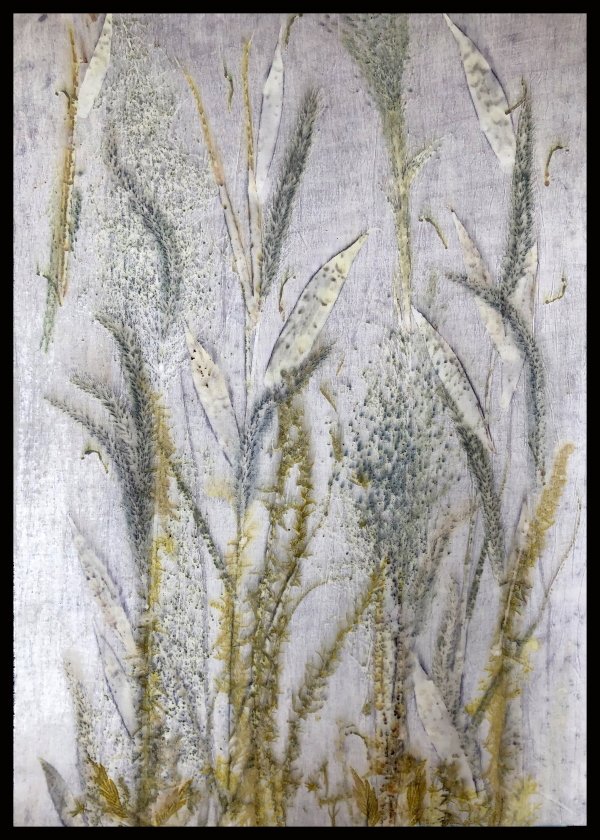The Craft in America Center in Los Angeles, CA, presents Influences/Influencers: California Fibers from September 9 - December 2, 2023. Influences/Influencers features the work of twenty-three members of California Fibers: Sandy Abrams, Olivia Batchelder, Charlotte Bird, Ashley V. Blalock, Carrie Burckle, Marilyn McKenzie Chaffee, Ben Cuevas, Doshi, Polly Jacobs Giacchina, Lydia Tjioe Hall, Susan Henry, Annette Heully, Anifaye Korngute, Kathy Nida, Liz Oliver, Marty Ornish, Michael F. Rohde, Rebecca Smith, Cameron Taylor-Brown, Elise Vazelakis, Debra Weiss, Peggy Wiedemann, and Aneesa Shami Zizzo.
This exhibit showcases the breadth of the influential and innovative work created by members of California Fibers. Emily Zaiden, Director and Curator of the Craft in America Center, states, “The artists in this exhibition are part of an historic organization that has been at the forefront of contemporary fiber art in Southern California, across the state, and far beyond.” Influences/Influencers represents some of the vast influences that are shaping fiber today,and simultaneously is a celebration of how fiber has become a beam of influence on the broader contemporary art world in recent years.
Works in the exhibition are accompanied by artist statements expressing the myriad influences on their individual artistic practices and are a window into the many threads that continue to shape the field of contemporary textile art and artists. Some examples follow.
Susan Henry says of her work Vortex II, “I find great inspiration through art history and most notably the artist Joseph Mallord William Turner… Turner's influence in my work is reflective of a combination of perspective, movement and chaos as I aspire, like Turner, to convey mood rather than information.”
Susan Henry, Vortex II: deconstructed wool trousers, cotton canvas Arashi wrapped and discharged resist, machine stitched.
Annette Heully states that her piece Weight of Change – Red is made with yarns that were gifts from her mentor Frances Bulwa. “By using this material it was my way of honoring her memory. The pieces all have unwoven sections exposing the warp threads expressing the feelings of loss. Over time the weft threads slowly settle, starting to close these gaps referencing grief and the element of time in healing.”
Annette Heully, Weight of Change - Red: handwoven wool and cotton.
Ben Cuevas says that his more recent work is influenced by Agnes Martin. Her white paintings that explore the idea of the grid are referenced in his current series, Non-Binary Code, of which Reveal/Conceal Diptych is a part. “I knit with acrylic fiber on canvas in a stitch pattern derived from the word NON-BINARY, which I translated into binary code, with knits for 1’s and purls for 0’s. The finished work is an abstract minimalist white grid knit-painting, and a coded meditation on gender identity.”
Ben Cuevas, Reveal/Conceal Diptych: acrylic fiber on canvas.
Anifaye Korngute finds inspiration from her study of choreographic artmaking as an experimental and explorative form. “I learned about Black Mountain College from the perspective of Merce Cunningham and John Cage — Chance Dance, which continues to influence my artmaking today.” Her piece They Call Me Mellow Yellow is a current expression of this approach.
Anifaye Korngute, They Call Me Mellow Yellow: silk noil (raw silk), washi paper, fabric dye, sumie ink, gouache, acrylic, cotton, stitch, charcoal.
Carrie Burckle states that her influence for (en)gendered vessel “comes from my teacher Carol Shaw-Sutton. Carol Shaw-Sutton was my professor at CSULB where I earned my MFA. She was head of the fiber program for 35 years…Carol emphasized deep knowledge of materials and skill building as a foundation for idea-based work that pushed the boundaries of fiber art.”
Carrie Burckle, (en)gendered vessel: kraft paper twine, house paint, twining.
Elise Vazelakis says, “As a weaver, I have long been inspired by the weavings of Deidrick Brackens and his unique process of combining the tactile nature of yarn with the rich tradition of storytelling. His work has influenced my own artwork in countless ways, but perhaps most significantly in my series Exposed. This series is deeply personal to me as it incorporates construction materials salvaged from the rebuilding of my home that perished in the 2018 Woolsey Fire. I have been able to imbue these materials with new meanings and bring my own story to life in a tangible way.” A piece from this series, Exposed VIII, is included in this exhibition.
Elise Vazelakis, Exposed VIII; loom-woven cotton, concrete anchors, wood-panel-mounted.
Kathy Nida’s piece, And Then There Was One, exemplifies the ongoing influence of “…women artists or artists creating about being female; this piece is about being a feminist, which means raising both my kids, one male and one female, to accept a woman’s equity and strength in today’s world, to make no assumptions of what is right for this or that gender, or to even let biological gender limit us.”
Kathy Nida, And Then There Was One: fused applique, machine stitched, machine quilted.
Lydia Tjioe Hall states that her piece Nesting Houses is influenced by Ruth Asawa’s “sculptures within sculptures.”
Lydia Tjioe Hall, Nesting Houses, Steel wire looping technique.
Michael Rohde explains that his work Birnalese Sonnet is one of a series “examining languages, how they are expressed and used. This subset of that effort comes due to influences by Jim Bassler’s own work based on examination of Peruvian textiles. My connection to language and Peruvian textiles comes from speculations by scholars such as Mary Frame. She has explored the idea that repeated patterns in textiles might encode undeciphered verbal ideas…”
Michael F. Rohde, Birnalese Sonnet: handwoven tapestry: silk, natural dyes.
The Craft in America Center is located at 8415 West Third Street in Los Angeles, CA. Hours are Tuesday – Saturday from noon – 6 PM. Admission is free. The opening reception with participating artists is September 9 from 3-5 PM. Workshops and talks TBA. Check the Craft in America website for more information about upcoming events.
About Craft in America and the Craft in America Center: Craft in America is a Los Angeles-based nonprofit arts organization founded in 2004 with the mission to promote and advance original handcrafted work through programs in all media. In addition to the acclaimed PBS documentary series, Craft in America promotes and advances original handcrafted work through the Craft in America Center—a small museum, library, and programmatic space where visitors engage directly with art, artists, and ideas. They give voice to traditional and contemporary craft, ranging from functional to purely conceptual, through personal engagement. They organize exhibitions, artist talks, scholarly lectures, a reading group, book signings, hands-on workshops, demonstrations, student field trips, concerts, and publications. The Craft in America Center produces 6-8 exhibitions per year featuring work by local and nationally acclaimed artists. They highlight the work of numerous local craft-based artists while providing a platform in Los Angeles for the nation’s finest artists. For those who are not able to visit in-person, exhibitions are digitized and shared on their website and artist talks are filmed and archived online as resources for all to access. The Center also operates an education outreach program, Craft in Schools, which offers standards-based art education for underrepresented LAUSD and public K-12 schools and local colleges.


























































